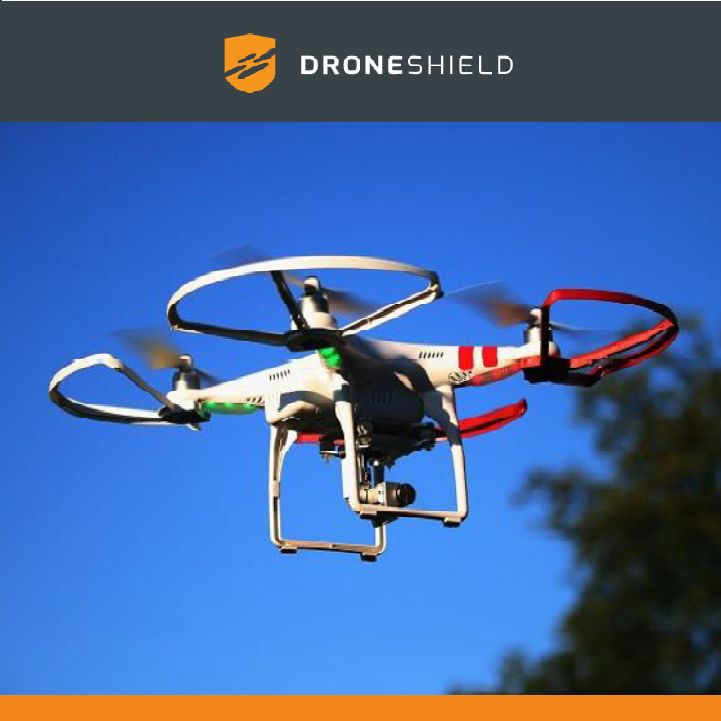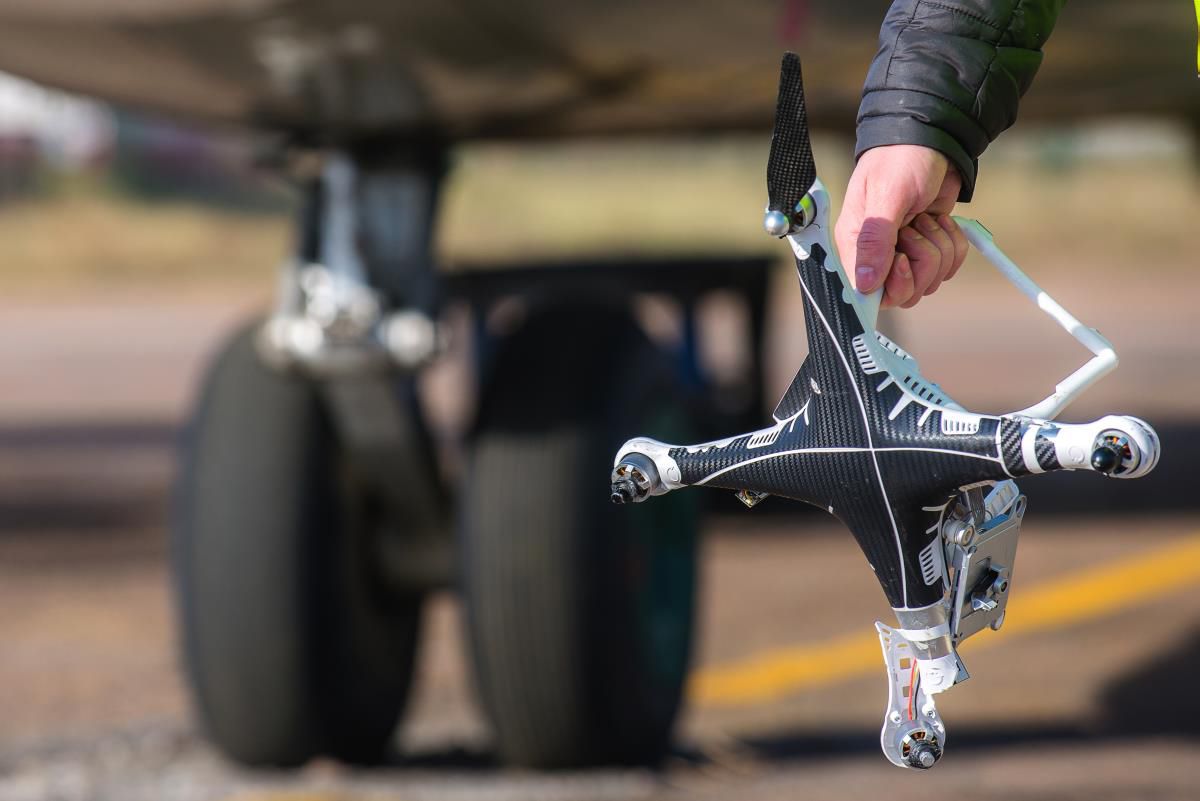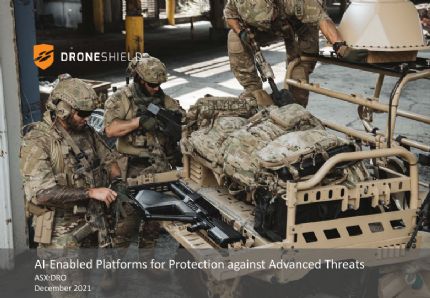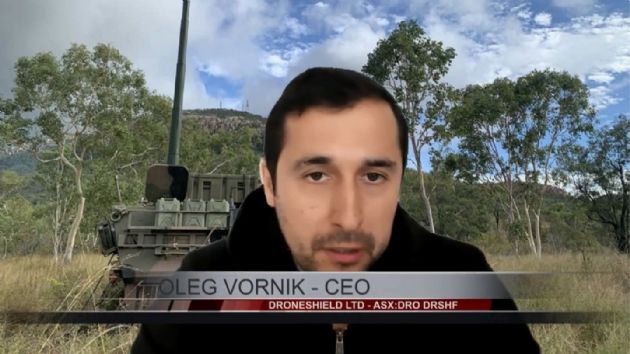 DroneShield Ltd (
DroneShield Ltd (![]() ASX:DRO) is pleased to provide a post with the title "Top 5 Illegal Ways Drones Get Used". The global consumer drone market is expected to reach US$14 billion by 2023 according to Goldman Sachs research. Since drones are a rapidly expanding, fledging market with an ever-increasing number of drones selling each year, it's hard to nail down exact figures and we may see these numbers grow even faster than experts estimate.
ASX:DRO) is pleased to provide a post with the title "Top 5 Illegal Ways Drones Get Used". The global consumer drone market is expected to reach US$14 billion by 2023 according to Goldman Sachs research. Since drones are a rapidly expanding, fledging market with an ever-increasing number of drones selling each year, it's hard to nail down exact figures and we may see these numbers grow even faster than experts estimate.
With this surge of drone sales and grey legality of when and where drones can be flown, it stands to reason that the number of instance of illegal drone use will also rise. How do you know if you'll be a target of illegal drone use? Here are the five most common ways drones are used illegally.
1) Terrorism
A Newsweek article from this year is chillingly titled "Terrorist Drone Attacks Are Not an 'If' But 'When'." There is a real threat of ISIS using hobbyist drones strapped chemicals or explosives to attack civilian populations. Drones have already been used in a variety of applications of the battlefield from filming propaganda videos for ISIS to scouting enemy positions, but the ease of availability, inexpensive models, and the fact that drones are highly portable makes them uniquely positioned to be used in acts of terrorism.
But its not just a threat overseas. Weaponizing drones is easy enough that an 18-year old from Connecticut mounted a semi-automatic handgun to a drone and put a video of it up on YouTube.
Bombs are also not the only terrorism threat that drones pose. Loading a drone with radioactive or toxic material, and spraying a major city, is on the list of the risks.
2) Prisons
Drones are the hot new thing to smuggle contraband - drugs, weapons, pornography, cell phones, etc. - into prisons, sometimes right to the prisoner's window. Of course, smuggling contraband into prisons comes with some hefty fees and a potential jail sentence if caught, but it hasn't stopped a marked rise in this tactic in the last few years.
While there aren't hard numbers on this, it's happening all over the world. While prisons can simply wait for a drone carrying contraband to drop it to confiscate, it gets a little murkier when the drone is simply doing surveillance, tracking guard changes or taking pictures of the prison grounds itself to gather data to formulate an escape plan.
3) "Plane Watchers"
Drones must be flown at or below 400 feet and unless the traffic control center is contacted, it's illegal to fly a drone with five miles of an airport. These laws are set for very practical reasons - those being that if a drone were to get sucked into a 747 engine, it could end in tragedy (here is the sneak preview of the study of what happens to the engine - The speed of drone debris thrashing about inside the engine could reach speeds 715 miles per hour. Broken blades also would create more fragments as the fan crumbles and warps the engine block housing, contributing to catastrophic engine failure). However, drones flying too closely to manned aircraft is happening at dangerous levels. According to a report from the FAA, from August 22, 2015 to January 31, 2016, nearly 600 drones flew too close to airports or airplanes.
These incidents were sometimes taken to a scary level when manned aircraft have been knocked off course or forced to take evasive action to avoid hitting a drone while flying, even at cruising altitudes. A report from Bard College estimates there have been 28 of these incidents from December 2013 to September 2015.
4) Illegal Surveillance
The question of what constitutes illegal drone surveillance is something countries around the world are grappling with. Sweden recently outlawed the use of drones equipped with cameras, deeming it illegal surveillance unless the pilot applies for an expensive permit. The FAA guidelines specify that drones should not be flown over people, stadiums, or large crowds, but drone pilots could also get in trouble for flying over private property where the owners have a reasonable expectation to privacy. In 2014, California passed a paparazzi drone law to try to protect celebrity children. Meanwhile Kanye West is taking no chances by getting a pack of trained eagles to protect against paparazzi drones.
Illegal drone surveillance can be on a individual level, like drones flying over celebrity property, but it also happens on a large scale. Sports stadiums have struggled to find a solution to drones hovering over games and taking illegal video footage from the skies, and movie studios are learning to deal with drones flown by fans trying to predict the plot of the upcoming production.
5) Interfering with First Responders
Drones have quickly become a nuisance and danger to first responders, especially fire fighting pilots. The U.S. Forest Service has recorded 13 wildfires where drones have interfered with fire-fighting aircraft this year alone. Not only does this put first responders in danger, but it makes it harder for them to be effective and the wildfires could spread. This is such a serious threat that California just recently passed a law in September that allows first responders to damage or destroy drones that could interfere with emergency responses.
DroneShield provides the world leading drone detection solution combined with DroneGun (where legal for the customer to deploy) - a portable rifle-style jammer, to neutralise the intruding drones. Go here for more information.
About DroneShield Ltd
DroneShield Ltd (ASX:DRO) (OTCMKTS:DRSHF) is an Australian publicly listed company with its head office in Sydney and teams in the US and UK. We specialise in RF sensing, Artificial Intelligence and Machine Learning, Sensor Fusion, Electronic Warfare, Rapid Prototyping and MIL-SPEC manufacturing.
Our capabilities are used to protect Military, Government, Law Enforcement, Critical Infrastructure, Commercial and VIPs throughout the world.
Through our team of primarily Australian based engineers - we offer customers bespoke solutions and off-the-shelf products designed to suit a variety of terrestrial, maritime or airborne platforms.
DroneShield is proudly exporting Australian capability to customers throughout the world and supporting Australia's defence, national security and other organisations protect people, critical infrastructure and vital assets.
.
| ||
|









